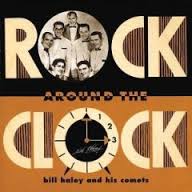 When I was born, Australia had lots of wilderness and very few computers. I didn’t like this arrangement. But now that we have less wilderness and more computers every day, I’m starting to relax. My side is winning the war.
When I was born, Australia had lots of wilderness and very few computers. I didn’t like this arrangement. But now that we have less wilderness and more computers every day, I’m starting to relax. My side is winning the war.
The years keep coming, and we need all of the computers we can get. They’re under our control. Predictable. Every single one of them has a known state, known behavior, and a known purpose. No more of them exist than we desire to exist. Nobody ever woke up and had to weed unwanted computers from their front lawn.
The world’s getting too big, too complex, and too interconnected for unpredictability. I want every idea, thought, and entity to either submit itself to humanity’s control or die. The big killer in the modern world isn’t technology, it’s wildness – by which I mean chaos, and unpredictability.
Cars are big stupid blocks of metal, exerting only a few hundred thousand joules of kinetic energy on impact. Meanwhile, the United States has thousands of nuclear warheads, each of which would release dozens of petajoules of energy on detonation. Yet cars massacre hundreds of thousands annually, while nuclear explosions have killed nobody in years not ending with “4” and “5”. You know why? Because are nukes are domesticated and cars are wild.
You could invent a disease par excellence, such as an airborn variant of Ebola, and so long as it stayed in a test tube or petri dish it would infect nobody. Meanwhile, 36,000 die per year thanks to the flu. It’s like having a foolproof plan to beat Mike Tyson/Mr Dream and instead you get knocked out by Glass Joe.
There’s a prayer that goes “God, don’t give me a lighter load, give me a stronger back.” Safety follows a similar precept: we don’t need a less dangerous world, we need a better control on that danger. And anyway, the world will keep getting more dangerous anyway, so what choice do we have?
I like the idea of a more mechanized world. Roads with perfect right angle intersections. Hills graded flat, so nobody has to switch gears. Maybe there’s a point where someone recognises me as wildness, but so far the domestication of our autonomous bodies has produced good fruit (glasses, artificial limbs, “Vote for Pedro” shirts for the continuation of one’s virginity, etc) and I’m interested in what happens next..
But there’s a risk: what happens when computers start to become wild? In September 2016, a malware called Mirai spread across the internet, brute-forcing unsecured devices using a table of common default usernames and passwords. The resultant effect was very wild: a large botnet of thousands of devices, capable of crashing web servers with a massive 1Tb/s influx of traffic. At the moment, such chaotic effects are only possible through human mismanagement. At the interface of the computers themselves, a transistor can only be on or off. Not much room for stochasm between those two points.
Maybe one day, we’ll have quantum computers that are capable of spontaneous wildness. They’d be machines par excellence, the highest echelon of computerhood. I’ve always been impressed by how the education of computers the same as the education of humans, just with the direction arrow reverse. They start out sane, and have to learn to be mad.
 TV killed the radio star, but it created the radio star first. “Rock Around the Clock” was a megahit, the song that helped launch the rock and roll genre, but upon its initial release in 1954 it was a commercial failure. Only after it found its way into the credits of the Blackboard Jungle did it climb the charts. A lesson was learned: if you want a hit, get it in a movie.
TV killed the radio star, but it created the radio star first. “Rock Around the Clock” was a megahit, the song that helped launch the rock and roll genre, but upon its initial release in 1954 it was a commercial failure. Only after it found its way into the credits of the Blackboard Jungle did it climb the charts. A lesson was learned: if you want a hit, get it in a movie.
Music benefits from a visual component, then, now, and always. Start pulling the threads that start with the ceremonial dancing of the Bhimbetka (documented thirty thousand years ago on a cave wall) and you can follow it through to the Greek tragedies, Japanese kabuki theater, the first “talkies”, Michael Jackson’s music videos, the tacky 8-bit LSD visualisations of mp3 players, and so forth. A photogenic element lets music work from another, more literal dimension – for example, taking the implied “scariness” of Bach’s Toccata and Fugue in D minor and making it explicit with horror visuals.
The visuals of a movie likewise benefit from sound, in a way that isn’t immediately obvious. We walk around with our experiences clouded by some emotional content, good or bad, and you never experience anything its own. When you eat a pastry you’re also eating the argument you had five minutes ago: you will enjoy the pastry less because you’re angry. When you spend money you’re only as happy or unhappy as the thought of how much is left in the balance. But most of this is gone in a movie – you’re watching a recorded slice of fake reality that you have no intrinsic attachment to. A soundtrack helps recolour all of the moments that have been bleached of their emotions by celluloid. The music acts as a little cue. “Feel sad here. Feel happy here.” That’s why scoring and foley is such an important part of film, even if it’s unmemorable on its own. Films are fake reality, and sound of all kinds is another graft of flesh over the mechanism.
But it must be depressing for a songwriter, knowing that your work will receive much of its impact from a visual component (which you had nothing to do with). It’s as bad works of literature getting culturally steamrolled by their film adaptations. Speaking of which I want to knock on Fitzgerald’s coffin and inform him that people will forevermore visualise Leonardo DiCaprio as Jay when they read The Great Gatsby. I am a bad man.
But that can’t be helped. Like Barthes said, authors are corpses who haven’t got the memo. Millions think “Born in the USA” is a patriotic anthem. That’s a valid reading, and there’s nothing the Boss or anyone else can do.
But I’ve never liked obvious soundtrack biscuits. If movies are cyborgs and music is artificial flesh, soundtrack songs are like plastic doll skin. You’re watching a movie, and then the narrative is interrupted by a cringingly obvious wannabe music video sequence. You can almost see the MTV logo appear.
In the 90s, there was a trend of songs from Disney movies becoming crossover mainstream hits. “Under the Sea” from The Little Mermaid won a Grammy. “A Whole New World” from Aladdin was a number one hit. From then on, every animated film needed that song. The worst was that shitty song Phil Collins put in Tarzan. You know the one. Where he doesn’t even reference the movie at all but just blandly rhapsodizes about finding yourself, et cetera.
Music and film have a troubled relationship, but they’re never far apart. Although it might seem like songs get swallowed whole by movies, subsumed until they’re just another part of the great machinery, they sometimes outlast the films they’re in. “Rock Around the Clock” achieved fame through the Blackboard Jungle, but who remembers that movie now? Bill Haley had the last laugh.
Sometimes the most insignificant things are the most enduring. Dwarves might stand on the shoulders of giants when walking through a field, but history isn’t a field, it’s quicksand. When the dwarf and the giant hit a but when the ensemble hits some soft quicksand, the giant sinks into obscurity first.
 I didn’t believe in evolution once. There were a few reasons why, but one of them was that there didn’t seem to be enough transitional fossils. I’d heard various biologists and paleontologists say the same thing: the chain had missing links.
I didn’t believe in evolution once. There were a few reasons why, but one of them was that there didn’t seem to be enough transitional fossils. I’d heard various biologists and paleontologists say the same thing: the chain had missing links.
Now I realise that evolution, on a long enough timescale, often stops looking like a gradual slope, and starts looking like a series of steps.
Evolution often work in fits and jerks. There’s periods of rapid change (when there’s strong selective pressure), coupled with long pit stops where not much happens (the pressure relaxes). This conceit is found in several theories. Ernst Mayr’s “genetic revolutions.” Stephen Gould’s “punctuated equilibrium”.
Sometimes, this is dictated by outside pressures – climate change, or the introduction of a new competitor. Sometimes it’s dictated by the form itself. As WD Hamilton pointed out, you’d expect a complete flying creature to be more successful than a semi-evolved creature with half-grown wings. Once selection starts working, the creature rapidly moves through morphological space until it reaches the new optimum.
The fossil record can be likened to a ship traversing an ocean, while a satellite in space takes a photograph of it every day. Imagine the voyage takes 10 days – would you expect the 10 photos of the ship to be at perfect 10% intervals along the journey? Not hardly. There might be doldrums. There might have a strong tailwind. It might have to carefully navigate around some rocks. But this isn’t disproof of the mechanism of sail, and it’s not proof that the ship is magically teleporting from place to place. Evolution isn’t just a question of “where are we going”, it’s a question of “how quickly will we get there?”
This sort of adaptationist thinking isn’t trendy, but even an evolution driven by drift isn’t going to operate at a constant rate throughout history. The generation of mutations is modulated by a host of environmental factors (radiation, UV light), and their spread is capped by social factors. Maybe all kinds of interesting mutations developed in the humans living the New World. So what? Until 1948, none of that affected the gene pool of the humans living in Europe at all. There was a big natural barrier in the way: the Atlantic ocean.
Another thing: does something looking superficially unchanged mean it’s not evolving? The horseshoe crabs are a famous example of “living fossils”, nearly unchanged after hundreds of millions of years. But it seems they did actually change a little bit – fossilized horseshoe crabs have legs that split into two ends, while the modern kind have no split. (Perhaps there’s better examples of living fossils. Cladoselache is a Devonian fish that looks very much like a modern shark. Trigonotarbida is 400mYa old yet easily recognisable as a spider – some fossils even have spinerettes.)
I guess you always want more fossils. But when I die, the fossil record will likely keep no record of me, so who am I do to deny transitional fossils a hypothetical existence?
 When I was born, Australia had lots of wilderness and very few computers. I didn’t like this arrangement. But now that we have less wilderness and more computers every day, I’m starting to relax. My side is winning the war.
When I was born, Australia had lots of wilderness and very few computers. I didn’t like this arrangement. But now that we have less wilderness and more computers every day, I’m starting to relax. My side is winning the war. 

